
Men in Heels: a Fashion History
For the last three centuries, high heels have been widely regarded as a women’s style. Seen everywhere from the runways to daily work attire, adding a few inches to a woman’s height is often considered the key to tying an ensemble together. However, as lovers of fashion inside and outside the industry take strides to break down the gender binary in clothing, many men have been spotted sporting the lifted shoe. By adopting footwear that has become such an iconic representation of feminine fashion, their choice is often dubbed “ground-breaking” or “gender-bending.” Funnily enough, the origination of high heels began specifically for men.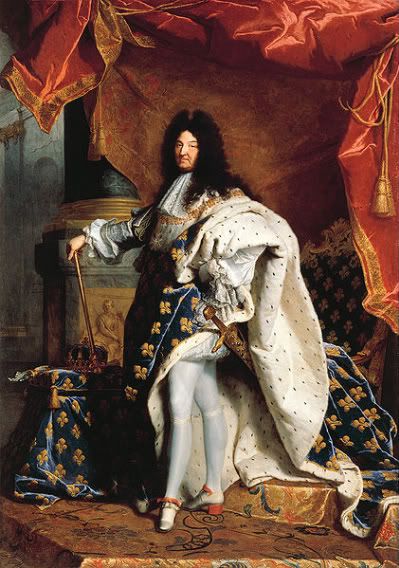
King Louis XIV.
The earliest known style of heels dates back to 10th-century Persia. Male soldiers riding horseback used heels to secure their feet in the stirrups and give them more leverage when fighting. The concept would be adopted nine centuries later by the American cowboy, but more on that later.
As the high heel came to signify power and military prowess, it also became a show of wealth, as only those with money could afford horses. This symbolism reemerges in France in the 1600s under the reign of King Louis XIV. The Master of Versailles used footwear to distinguish both class and preference. In 1670, he proclaimed that only members of the noble class could wear heels. Within this group, he only allowed his favorite courtiers to wear red (his color of choice).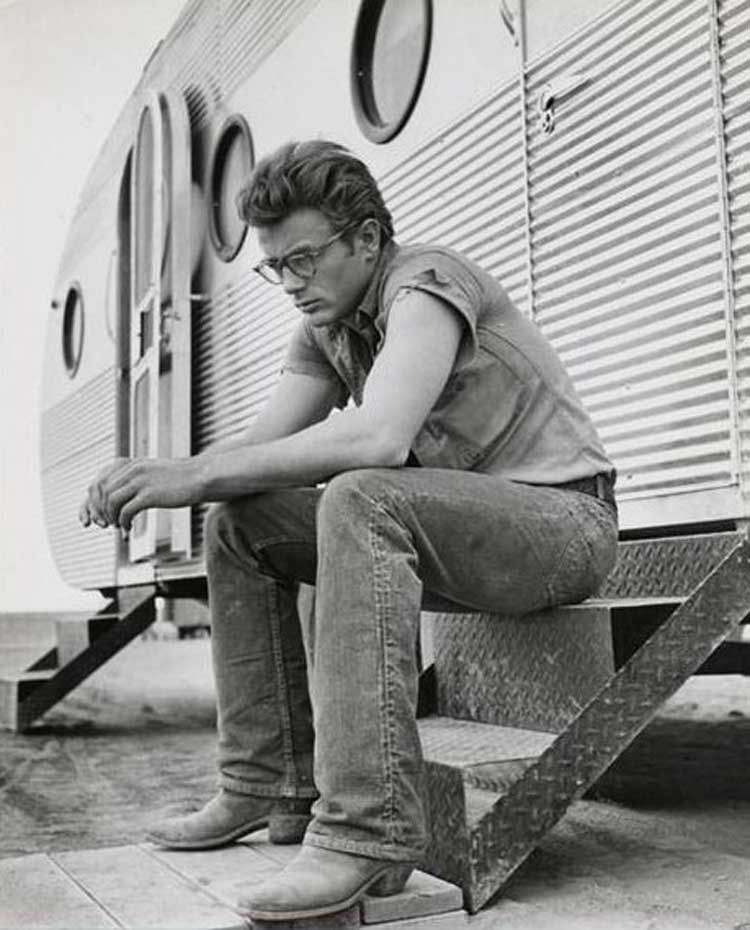
James Dean in cowboy boots.
By the end of the French Revolution, however, high heels were considered too feminine and generally disregarded men in Europe. However, across the pond, as the American West began to attract new settlers, the cowboy, arguably identified and defined by his attire, was considered the epitome of masculinity and male pride. Most cowboy boots featured an inverted round heel called a Cuban heel (referencing the footwear of traditional Flamenco dancers) and were a necessity for staying upright while traveling long distances on horseback. 
The Beatles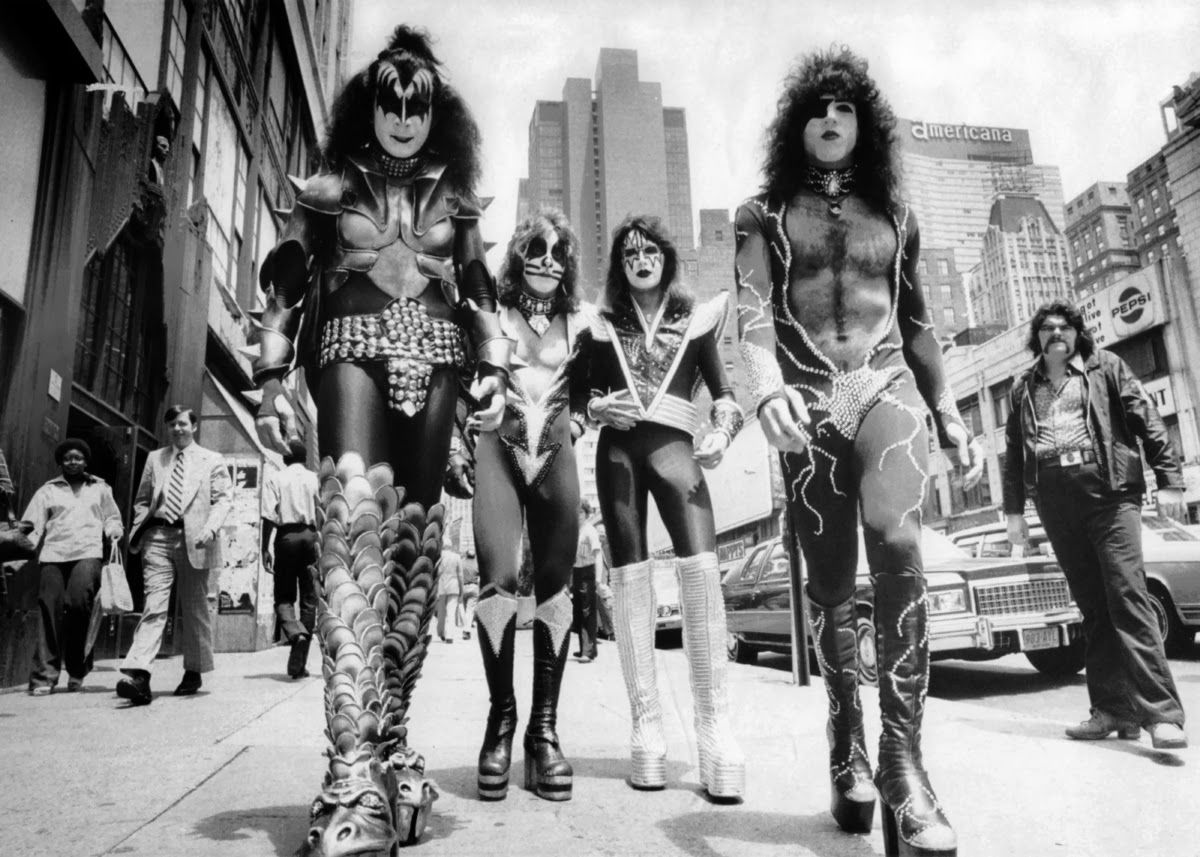
Kiss.
Despite this, heels outside the cowboy context were generally still regarded as a women’s shoe. It wasn't until the 1960s when the Beatles popularized the “Beatle Boots”-an early iteration of Chelsea boots-that the heel was reinvited into menswear. Rock-n-roll groups of the late-20th century like Aerosmith and Mötley Crue adopted similar tame styles as well, while glam rock artists like Kiss and David Bowie opted for more ostentatious versions.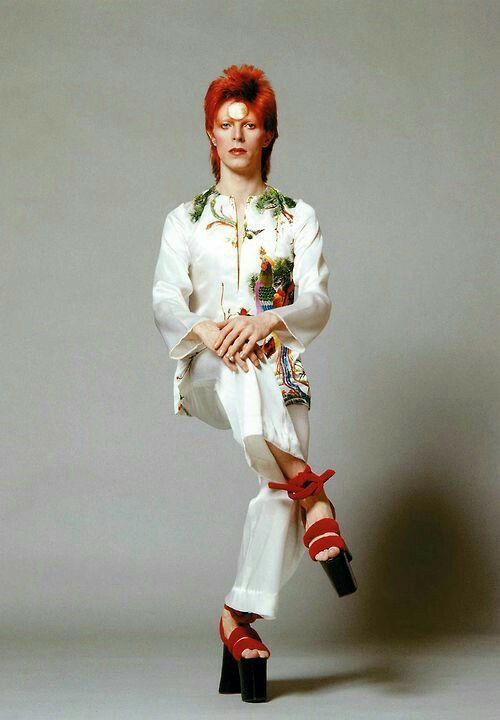
David Bowie.
Unlike the low Cuban heels of '70s hair bands, Bowie and his stage persona Ziggy Stardust gravitated towards bold platforms, stilettos, or generally higher heels-all of which were, at the time, synonymous with women's fashion. While subcultures like drag queen communities and ballroom culture during this time had already normalized men wearing heels and other traditionally feminine garments, Bowie's look brought gender subversive fashion to the mainstream.
Hood by Air Fall/Winter 2016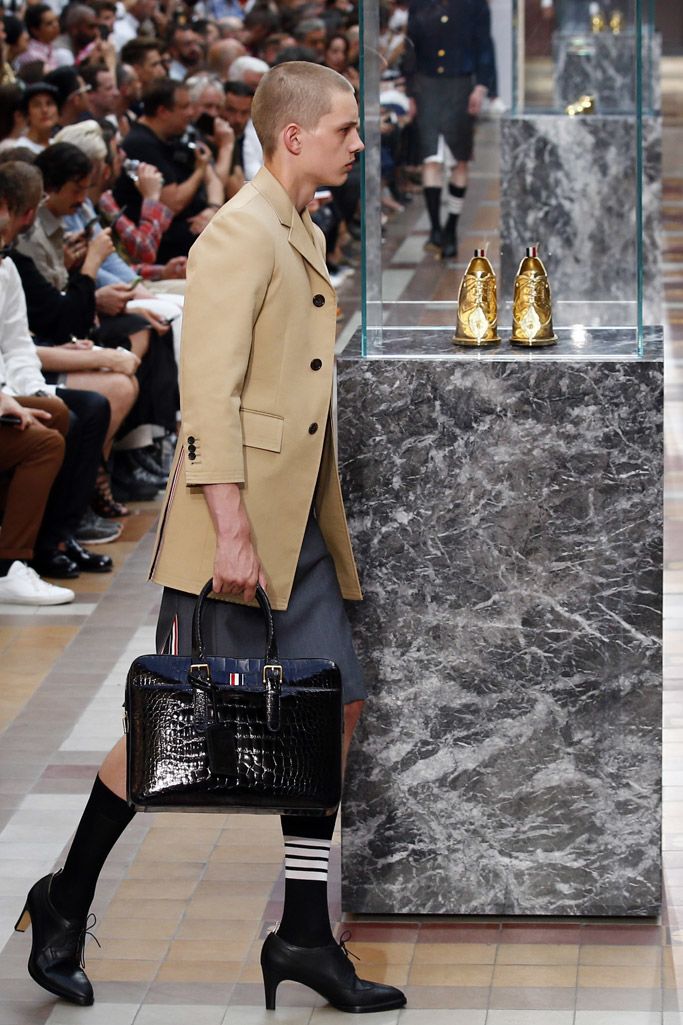
Thom Browne Spring/Summer 2018.
In the 2010s, the return of the Chelsea boot in men's wardrobes was, once again, met was considerable attention. However, as designers continue to blend menswear and womenswear, the gendered lines around clothing and accessories have lightened in their severity. Heels higher and flashier than a simple black Chelsea boot are more common for men than in previous decades. Brands have employed them as part of their menswear collections, and they've even found their way into streetwear.
Similar to apparel, the declassification of heels as a "woman's shoe" continues to unfold as clothing becomes less tied to one's gender identity and sexuality. As men hit red carpets and magazine covers in gowns, there's no reason they shouldn't have a nice pair of heels to accompany them.











